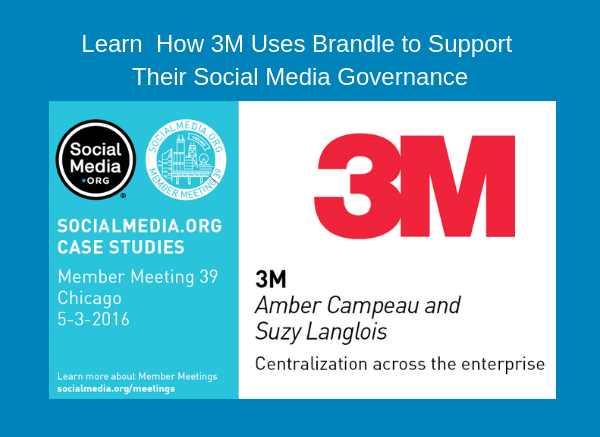 To attract and secure customers in today’s competitive business landscape, it is essential for every company to deliver a consistent brand image. for success and survival. As mentioned in Forbes, “consistency is the key to successful branding and consistency goes beyond the product itself. The brand promise must be clear with every interaction each stakeholder experiences.” This consistency must extend to every social media presence that represents a company’s brands.
To attract and secure customers in today’s competitive business landscape, it is essential for every company to deliver a consistent brand image. for success and survival. As mentioned in Forbes, “consistency is the key to successful branding and consistency goes beyond the product itself. The brand promise must be clear with every interaction each stakeholder experiences.” This consistency must extend to every social media presence that represents a company’s brands.
If a company has a social customer care, sales, or ambassador program, it should also extend to the people who manage those accounts as they are strongly relating to (and representing) the company’s brands.
When a customer, or potential customer, engages with a consistent brand presentation, they can be assured that the relationship they will have with the company will also be consistent. At least, that is the objective! Strong brand consistency can help create strong sales and strong customer relationships, if the strength of your brand presentation is also your brand culture.
Here are three ways that strong social media brand consistency plays a pivotal role with your customers
-
Brand consistency builds brand reputation.
Research shows that businesses view reputational damage as their top concern, especially since bad news can travel astonishingly fast across the internet. Indeed, many executives have learned the hard way that having the wrong story about their brand “go viral” can be disastrous. For example, earlier this year United Airlines showed big businesses how a viral video can turn into a PR crisis with a tsunami of online backlash. We’ve all heard those stories where the “voice” of an interaction brought on a PR crisis.
But there is also significant brand damage when customers attempt to interact with a stale social media account (that no one is monitoring) or those network generated place pages that you have not merged and where people are commenting. This is why your social media audit process is critical – to get the weeds out of your social footprint.
By having a strong social media brand management plan, you can ensure that current and future customers access a compelling, unified brand story — instead of a disparate, disjointed, confusing and contradictory one — across various channels and touchpoints (e.g. corporate website, social media platforms, customer care programs, etc.).
Consistency in simple assets, such as your display images, and more complex attributes, such as the voice across your profile data and interactions, matters to customers. No matter where they choose to interact or view your brand, they want to be sure that they’re reaching the right person who can help them with their product questions, concerns, and needs. This consistency across all social media builds trust which can augment brand reputation.
-
It highlights real and potential threats to the customer.
While strong social media brand management can help reduce reputation damage to the accounts that a company knows about and that are legitimately the responsibility of the company (including those stale accounts and place pages), it can’t stop bad actors.
Counterfeit sites and phishing sites (to trap consumers into ransomware scenarios or hacking personal accounts) are on the rise. THese accounts are true threats for consumers and for a company’s reputation. But presenting a consistent brand image and voice, a consumer may be able to detect a fake more easily. This helps protect both the consumer and the brand. Maintaining a strong risk management plan with steps to respond to these scenarios is also critical.
-
It identifies brand influencers and ambassadors.
The 2017 Edelman Trust Barometer states that the most credible spokesperson for a company on many issues is an employee, closely followed by an “activist consumer”. This is a big reason to build a strong advocacy program.
A strong advocacy program often requires participation in a training program to learn the brand voice and appropriate ways to represent the company. An established brand image can also be shared by social ambassadors, which builds on the brand consistency presented on the corporate-owned social presence. This consistency can add to the consumer feeling secure that the person they are engaging with is knowledgeable and permitted to be speaking on behalf of the company.
Extending the brand imagery and voice to these ambassadors is another way to strengthen your brand reputation, build trust with consumers, and create strong customer relationships.
Learn More
To learn more about how to monitor the web for brand consistency and conduct brand audits, download our eBook “The Social Media Governance Plan”. This eBook details the twelve critical steps every social enterprise needs to consider when managing a distributed brand presence.









